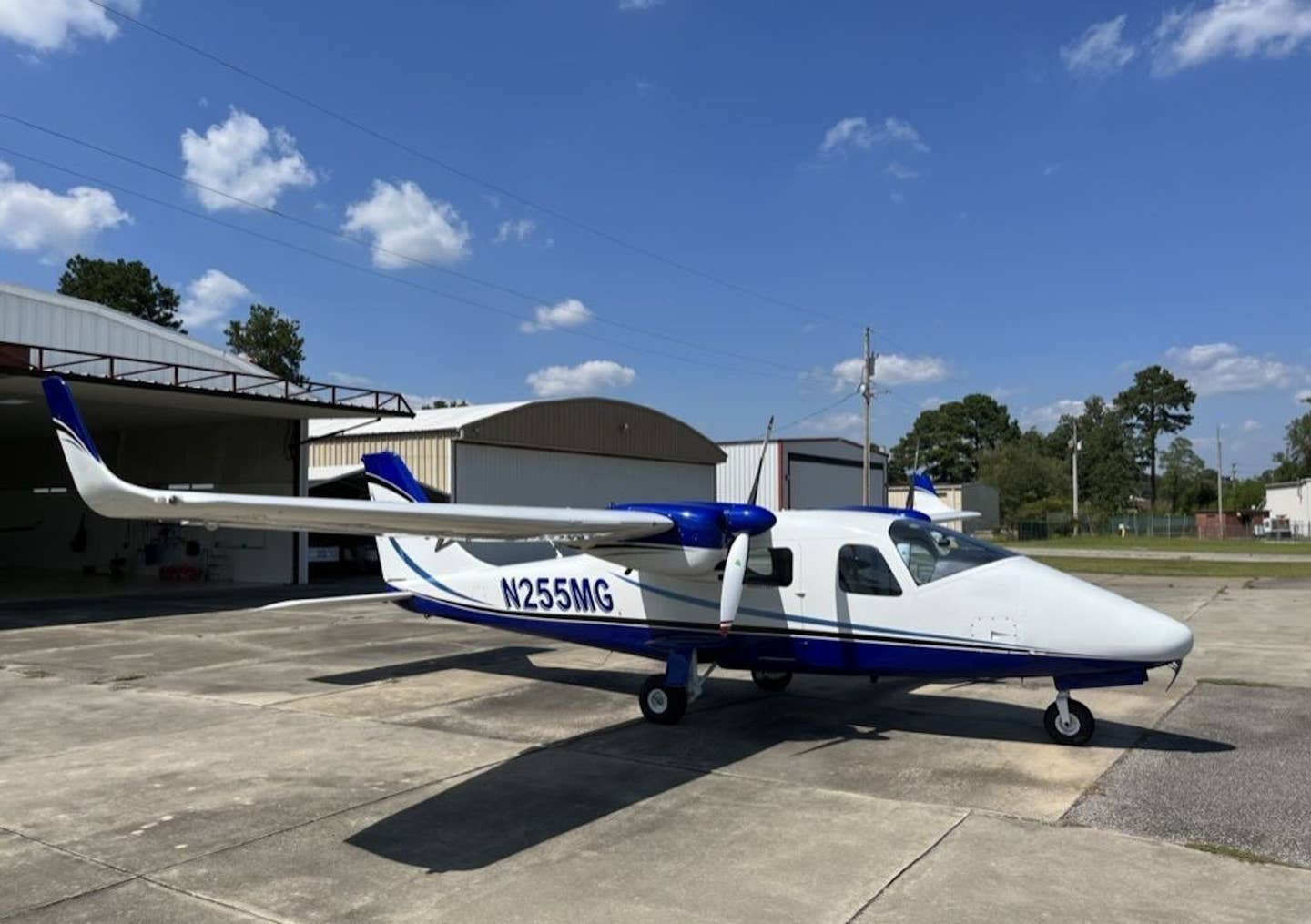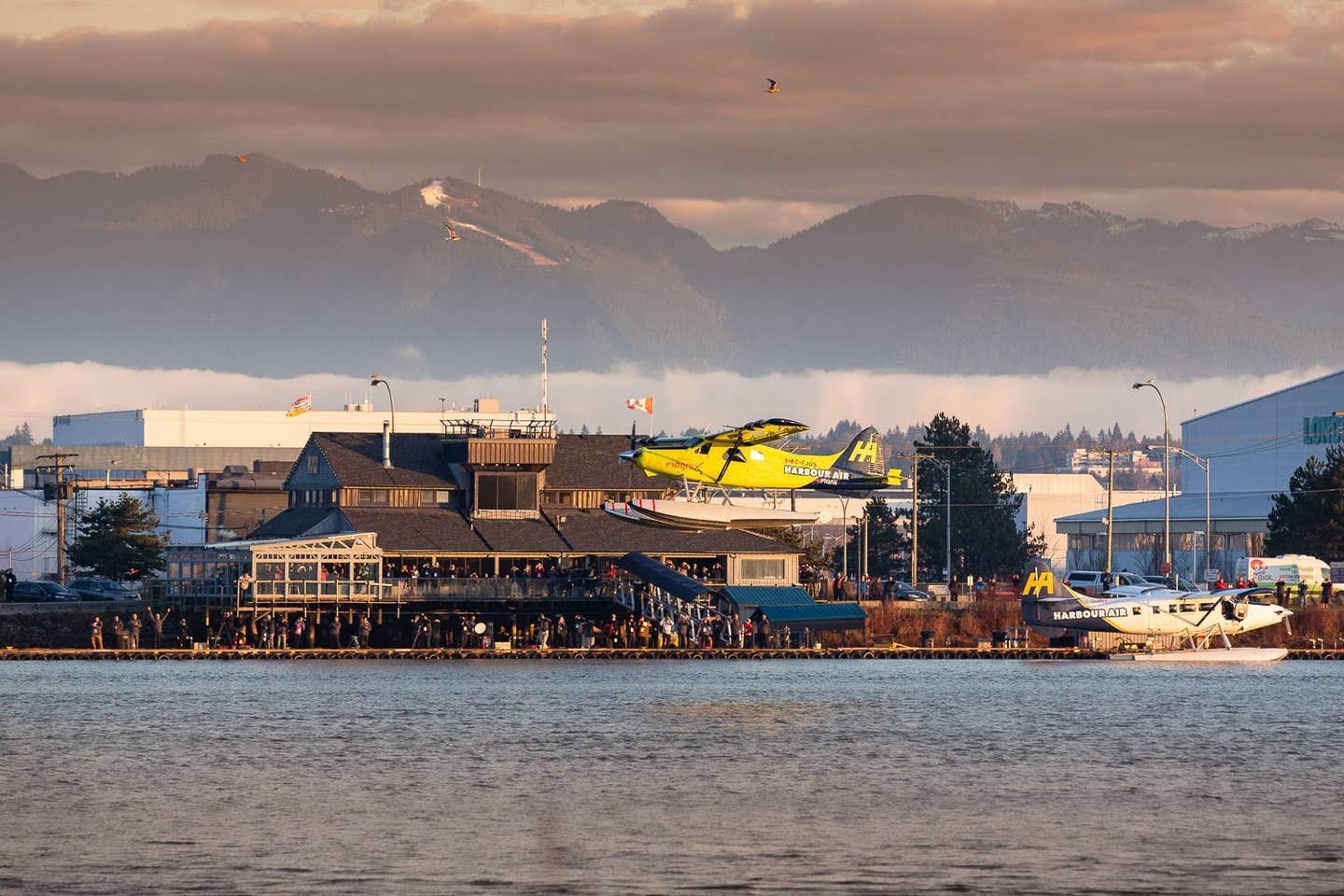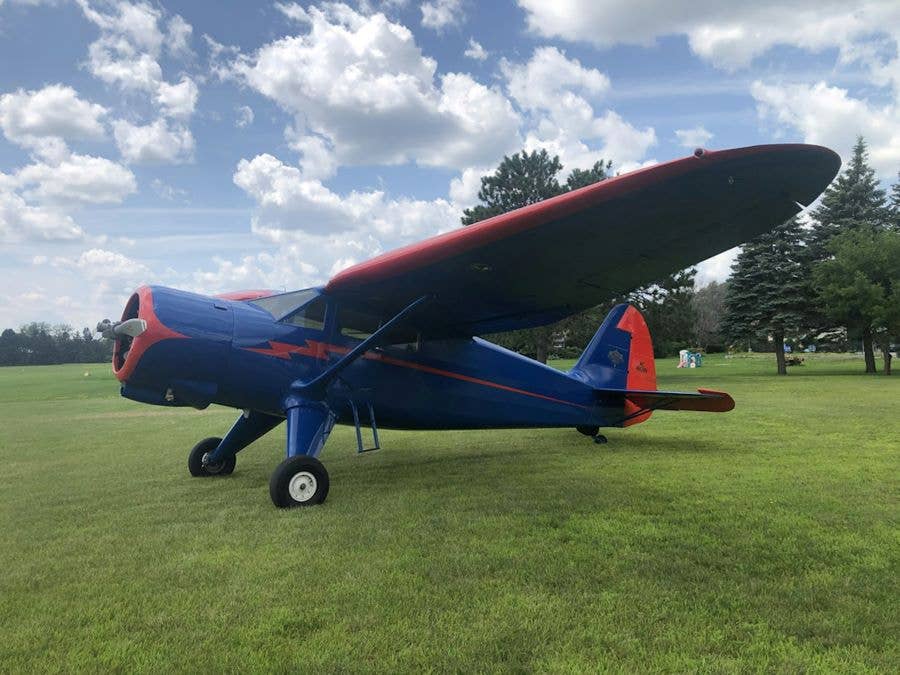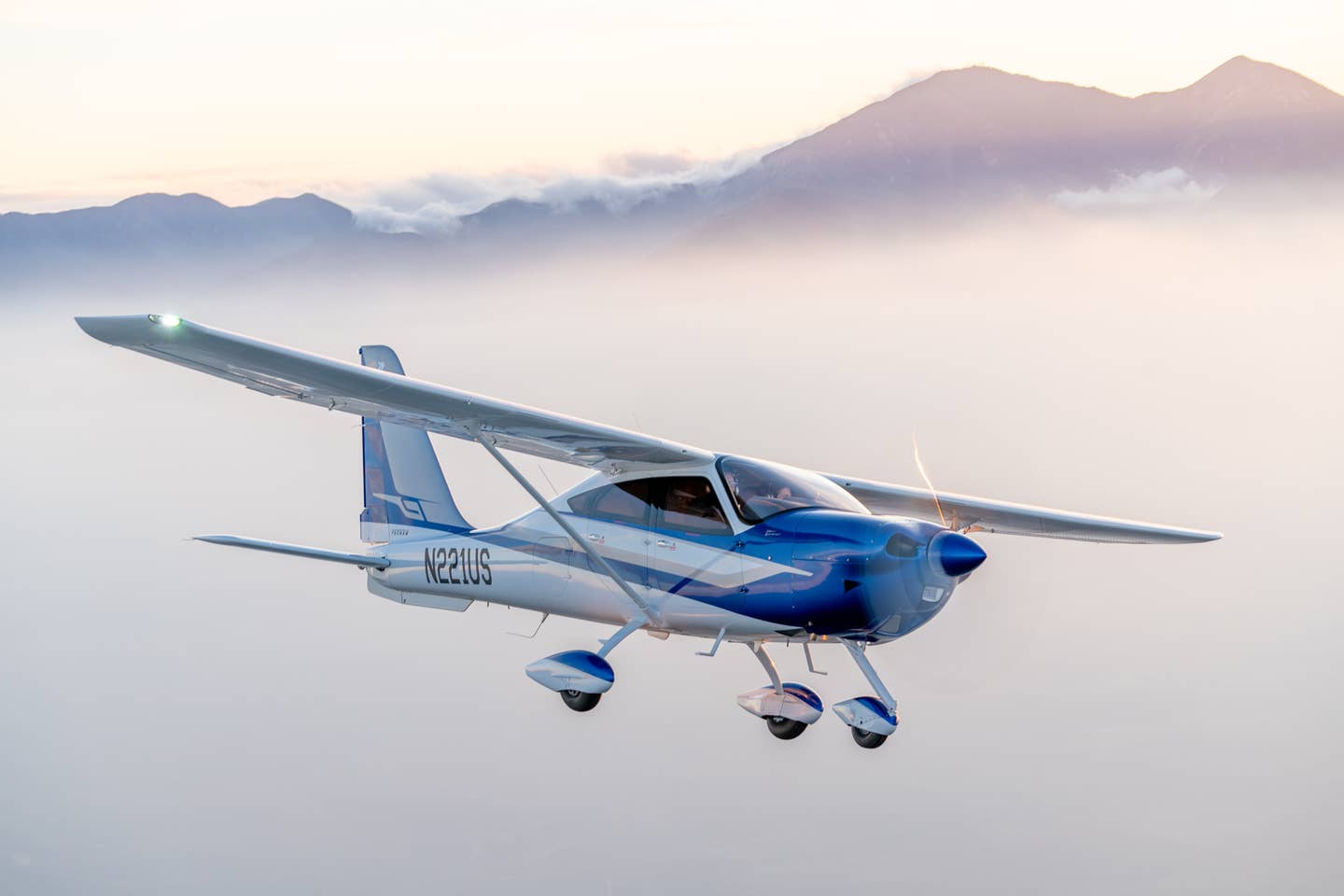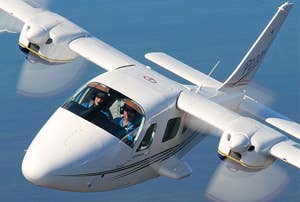
Tecnam P2006T
_(September 2011) _Just fly it like a Cessna 172,” said Tecnam’s demo pilot David Lubore as we approached to land at Plant City Airport (KPCM) in Florida, just west of Lakeland Linder Airport, at the completion of our demo flight. I set the airplane up on downwind at around 90 knots with the gear down. I added flaps, turned base, added more flaps, then turned final and lined the airplane up with Runway 28. Lubore remained quiet as I continued the approach leg, getting closer and closer to the narrow strip. With full flaps extended, I came over the numbers at 70 knots — only a couple of knots faster than I would have in a Skyhawk. I flared the airplane, just like I had done thousands of times in a Skyhawk, and it settled down on the ground with a smooth squeak.
Other than the slight speed change, there was really just one difference from what I had become accustomed to in the 172. I had to manage two throttles in my hand. I wasn't flying a single-engine airplane. I was flying the P2006T Tecnam Twin
The Tecnam Twin P2006T is an all-metal, high-wing FAA Part 23-certified airplane powered by two 100-horsepower Rotax 912 S3 engines. The airplane is produced by Costruzioni Aeronautiche Tecnam, based in Capua, Italy — a town founded sometime around 600 B.C. and located less than 14 nautical miles north of the historic city of Naples and about two hours south of Rome. Several aviation universities and a company called CIRA — Italian Aerospace Research Center, Capua — are located in this aviation-saturated region, which also houses some of Tecnam’s subcontractors.
Just as Capua dates far back in human history, Tecnam's story began comparably early by aviation standards. Tecnam's president and primary airplane designer, Professor Luigi Pascale, or "Il Professore" as the Tecnam employees amicably call him, began designing airplanes with his brother Giovanni in 1948. Through the decades, the company has been a true family business. Unfortunately, Giovanni died several years ago, but his son, Paolo, serves as managing director of Tecnam.
Tecnam has become known for its very light, single-engine airplanes, but Luigi Pascale is no stranger to twins. He designed the very successful P68 while the family company was known as Partenavia. At first glance, there is no doubt that the six-seat airplane originated from the same genome as the Tecnam Twin. Partenavia was sold to the Italian government in the 1970s, but the P68 is still produced by Vulcan Air, a company located in Naples that bought the rights to the airplane.
For several years, the Pascale brothers focused their efforts on building parts for several airplane manufacturers — Boeing, ATR, Learjet, Falcon and Dornier, to name a few. In 1986 they founded Tecnam and, once again, began designing and manufacturing light, single-engine airplanes.
Why would an airplane manufacturer consider producing a new multiengine airplane when several single-engine airplanes on the market produce the same speed with only one engine to feed and maintain? Operators who prefer the redundancy of having two engines and training facilities with students needing multiengine training and hours to further their flying careers demand twins. But, traditionally, the need for two engines has come at great expense.
Tecnam set out to design an entry-level twin that is more affordable to buy and operate than the fewer than a handful multiengine airplanes in production. It was a great departure from the company’s focus on single-engine, light airplanes — mostly in the light-sport category — to put to market the FAA Part 23-certified Tecnam Twin.
So far, the project appears to be a success. Even though the P2006T is a relatively new airplane, Tecnam has already delivered more than 75 twins to more than 30 countries. There are about 100 orders still to be satisfied, and the production schedule is up to about 50 to 60 airplanes per year.
The Design
In order to be successful, the airplane needed to achieve a good power-to-weight ratio. With a total of 200 hp between two engines, the airplane had to be light. And there is no denying that Tecnam was successful in that regard. In fact, the maximum takeoff weight for the P2006T is only 2,601 pounds — well over 1,000 pounds less than its closest competitors’.
Several design parameters have helped keep the airplane light. The landing gear is attached to the fuselage instead of the wings, enabling a lighter design for the wing structure. But what really makes the Tecnam Twin light is the choice of engines. At only 160 pounds each, including lubricants and coolants, the Rotax 912 S3 engines are at least 25 pounds lighter than other small piston engines.
The Rotax engines’ small size allows for smaller engine cowls, which reduce not only weight but also drag. With total fuel burn of only about 10 gallons per hour, the Rotax option doesn’t demand a large fuel capacity, which provides an additional weight advantage. Nearly 26 gallons of fuel can be stored in each fuel tank, located in the wings outboard of the engines. That makes the total fuel capacity a little over 51 gallons — about half that of other light twins, which is logical since the fuel burn is also about half. More about the engines in a bit.
According to Tecnam, the light but solid construction has earned the P2006T a 140,000-hour life limit on the airframe — a major plus for high utilization environments, such as flight schools.
The airplane flown for this story was an early, pre-certification model with an empty weight of 1,817 pounds. A useful load of 784 pounds doesn’t sound like much, but with a fuel capacity of only 51 gallons, the airplane’s payload is still 478 pounds. Since the fuel burn is only a total of 10 gallons for both engines, you could still fly a family of four with two young children and gear for about 2.5 hours. And the weight capacity is plenty for aerial surveying and flight instruction. The luggage compartment has a weight capacity of 176 pounds and is accessible by moving one of the rear seats and folding it forward.
Though the passenger area is smaller than in typical multiengine airplanes, there is plenty of legroom for the nonflying occupants, since there are only two seats instead of the typical four in the aft cabin. There is also lots of legroom and elbowroom in the cockpit with an impressive 48-inch cabin width. Ingress and egress are quick and easy through a large door on the pilot’s side — a great safety advantage also provided for rear passengers with the additional door in the back.
The elevator and ailerons are controlled by push rods, with internal cabin cables linking the controls to the rods. The same arrangement controls the stabilator. There are no fixed notches for the electrically actuated slotted flaps, but lines on a round gauge indicator show the position for 0 degrees, takeoff and 40 degrees of flaps.
Trailing-Link Gear
I can partially credit my smooth landing to the trailing-link gear — a rare feature for light twins but a common one in jets. The landing gear is electrohydraulic, powered by an electrically actuated, reversible pump, and the main gear rotates 90 degrees inboard during retraction. After the rotation, the wheel is hidden under the flat belly of the fuselage, while the gear struts are housed in unique-looking side pods that could be mistaken for steps. The pods are designed to give the gear a wider stance for improved ground stability.
The gear extension speed is a little on the low side at 93 knots, but Lubore says that figure will be increased. Emergency gear extension is triggered when a handle (hidden behind an access door on the pilot’s side floor) is pulled. The handle activates two valves — one opens the emergency system and the other releases nitrogen from a canister, which blows down the gear. Phil Solomon, CEO of Tecnam North America, says there is sufficient pressure to retract and lower the gear around two or three times.
The nosewheel is steerable through push rods linked to the rudder pedals, making the airplane very easy to steer on the ground.
The Engines
Part of the reason the Tecnam Twin is so light despite its spacious cabin is its engines. Tecnam stayed with the engine manufacturer that powers most of the certified LSA and ultralight airplanes the company offers — Rotax. Approximately 3,000 Rotax engines have been delivered in Tecnam airplanes, says Christian Mundigler, manager of Rotax Aircraft Engines & Kart Business. Much of the business comes from the ultralight and LSA world, and the company, which is based in Gunskirchen, Austria, claims to have delivered more than 150,000 airplane engines since 1973.
The 100-horsepower 912 S3 engines that power the Tecnam Twin originate from the 80-horsepower 912, which has been on the market for more than 20 years. While the 912 S3 is called a 100-horsepower engine, Lubore says it puts out 98.6 hp for five minutes and 92.5 hp during cruise.
Other than being light, a great benefit of using the four-cylinder, four-stroke Rotax engine, particularly in international environments where 100LL is nonexistent, is its ability to run on either avgas or mogas — even ethanol-based fuel. Auto fuel is cheaper and the Rotax prefers it. The engine requires an oil change only every 50 hours and a gear-box inspection every 800 — intervals that are reduced to 25 and 600 hours if you burn 100LL. Electronic ignitions give the engine its spark, so there is no need for timing adjustments.
The little engine spins as high as 5,800 rpm, but a gear box reduces the rate at which the constant-speed MT propeller spins to nearly 2,400 rpm, which makes the engine more efficient and quieter.
The high rpm generates a lot of heat, but the engine is liquid-cooled. Solomon says the water-cooled heads eliminate potential shock-cooling issues and allow for much shorter fins to cool the cylinders so the barrels can be significantly smaller. This allows for a much smaller engine cowl, which produces less drag.
Solomon also says the small size has tighter tolerances, which reduce the wear on the engine and make it less expensive to overhaul. A typical overhaul on a certified Rotax runs about $15,000. One prior complaint on the Rotax was its low TBO, but with proven reliability, the TBO for the 912 series has been raised from 1,500 to 2,000 hours. More than 40,000 Rotax 912 and 914 engines have been produced to date.
One complaint in the United States has been the lack of Rotax service facilities. The issue is being addressed, and Mundigler says 1,000 independent Rotax maintenance technicians in North and South America were trained just in the past two years.
Avionics
When it comes to avionics, the philosophy at Tecnam is flexibility. In a market where most manufacturers are focusing strictly on glass cockpits, Tecnam leaves the choice up to the customer. The airplane I flew was equipped with Garmin’s G950 — essentially an identical twin of the G1000, the only major differences being the certification (both are certified, but the G1000 is certified as part of the airplane while the G950 is not) and the fact that the integrated GFC 700 autopilot is not yet available for the G950. (It is, however, a work in progress.) In the meantime, the P2006T offers the S-TEC 55X autopilot. An extra benefit of adding the S-TEC 55X is that electric trim is included — an option that can be added without the autopilot. The manual trim control is a large wheel between the seats. Rudder trim is electric — located above and left of the control yoke.
The engine gauges are analog, and customers can choose to go the full analog route for the flight instruments as well. They can even add DME and ADF, if they so choose. “You can get anything you want, within reason,” Solomon says.
The high wing design helps keep the cabin cool, and the elevated engine mount position prevents prop strikes in case of a gear-up landing. However, with the Rotax engines, a propeller strike is not necessarily a costly event. Other than having to replace the propeller, the engine needs only a simple inspection of the gear box for a cost of about $300, Solomon says.
I jumped into the spacious P2006T cockpit, and after running through the pre-start checklist, it took no more than a fraction of a second to get the engines spooled up using the overhead ignition switches and starter buttons. The ease of start-up was both surprising and pleasing, as was the quietness of the cockpit. Lubore attributed the audible comfort to the twin’s insulation and the quiet engines.
The power quadrant contains three sets of controls — throttles, propellers and carburetor heat. Mixture is self-regulating.
With throttles and props forward, we climbed out at around 80 knots — blue line in the P2006T — and saw a nice established climb rate of 1,050 fpm. Lubore explained that there is no performance advantage above 10,000 feet and the airplane’s sweet spot for performance is between 6,000 and 8,000 feet msl, as it is for most normally aspirated airplanes. Once we leveled off, the throttles stayed full forward. With the Rotax, there is no reason to reduce the power during cruise as long as the tachometer reads below 2,265 rpm and the engine gauges stay within safe limits.
Full-power flight with no mixture adjustment makes fuel planning easy as well. While there is no display for fuel burn, Lubore claims it’s unnecessary. He says the airplane burns no more than six gallons per side on the climb and five gallons during cruise. For a total of 10 gallons per hour, you’ll get 145 knots cruise speed. “I have tested the airplane over and over and get consistent fuel burn and speed,” Lubore says.
With push-rod-activated controls, the airplane has a very direct control response, making it a joy to fly. Stalls are at least as uneventful as in any single-engine trainers I’ve flown, with the buffet coming a little over 50 knots with full flaps. Single-engine climb performance in the P2006T is quite impressive at about 250 fpm. Single-engine service ceiling is published as 7,500 feet.
Engine restart requires electrical power. The air force on the propeller is insufficient to overcome the high-compression design of the engine. This fact caused the FAA to require Tecnam to insert a backup battery during the Part 23 certification work — an effort that was concluded on Nov. 10, 2010, nearly a year and a half after the European Aviation Safety Agency certified the airplane. Another change required by the FAA was to move the carburetor heat controls to the right, where the mixtures are generally located. The carb heat controls were originally placed in the middle — as was the case with the airplane I flew for this report.
Among the first to take delivery of a P2006T when the FAA certification was finally completed was Airline Training Solutions, a family-run professional pilot-training facility at Craig Airport (CRG) in Jacksonville, Florida. The school recently opened its door with the concept of training pilots from day one in a multiengine airplane. Program director Hayden Malone says the concept would not have come to fruition without the Tecnam Twin. “We bought the Tecnam Twin because it was the only airplane that would fit our role,” Malone says. “It was strictly a business decision, but once we got it we also found we love it.”
Malone and the students at ATS have put nearly 300 hours on the twin since he took delivery at the beginning of the year. “It’s a well-built airplane and we’ve had no problems with it,” he says.
The Tecnam Twin is likely to be a very successful multiengine trainer. Another good purpose for the P2006T has been aerial surveying. An Austrian company, Airborne Technologies, has developed the Tecnam MMA (multi mission aircraft), which received an STC from EASA earlier this year. A multisensor camera system can be extended through a large hatch in the floor, similar to a bomb bay.
While the seating capacity, useful load and speed limit the practical use of the P2006T today, with a few planned upgrades the airplane could become a winner in other areas of use. The gross weight is expected to increase to approximately 2,710 pounds soon, and the targeted empty weight for a standard equipped airplane is 1,723 pounds. This weight change would give the Tecnam a satisfying useful load of close to 1,000 pounds.
There is no de-ice system, but Tecnam is working with TKS to install its weeping wing system — a process that the company hopes to complete in 2012. Tecnam is also working on a factory-installed air-conditioning system. A portable system is currently available as an option.
With a few improvements in the making, the Tecnam Twin has a good chance to attract customers far beyond the training and aerial surveying market. Its ability to burn any type of mogas gives the airplane an edge in the international market. And with the increased acceptance of the Rotax in the United States, the airplane may do well here too.
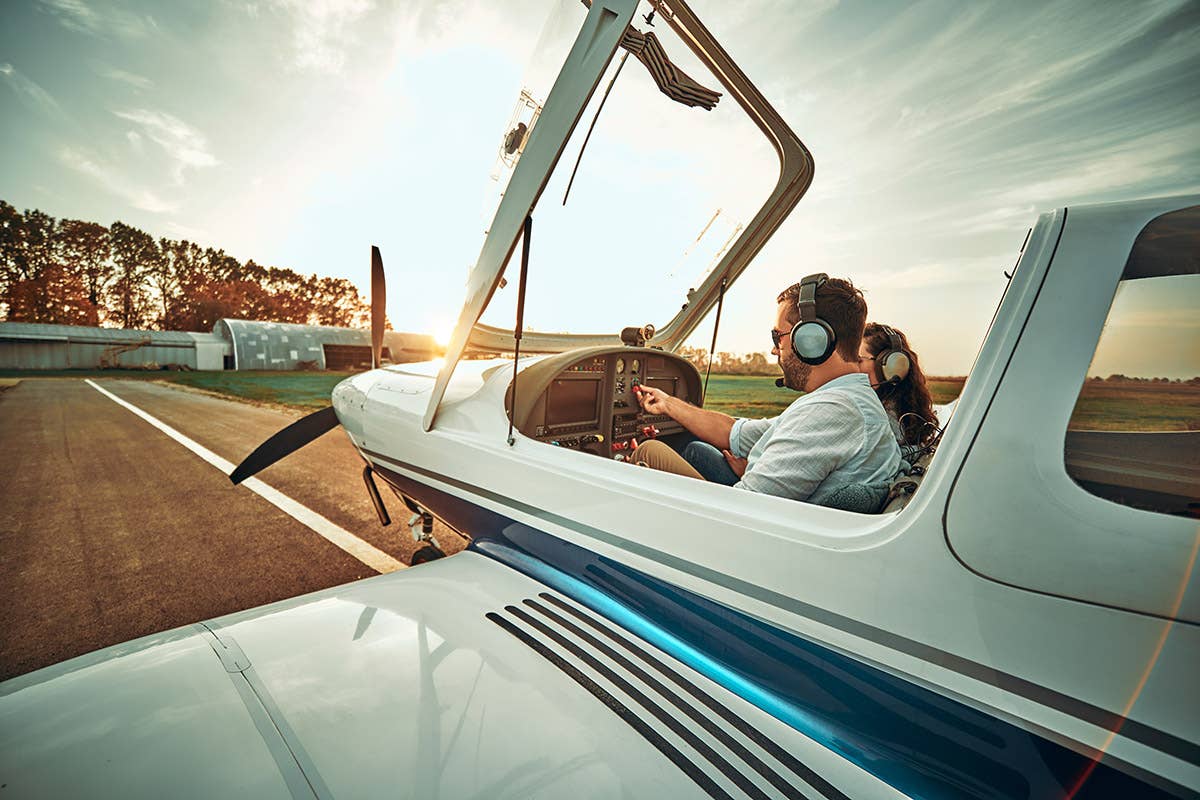
Subscribe to Our Newsletter
Get the latest FLYING stories delivered directly to your inbox


